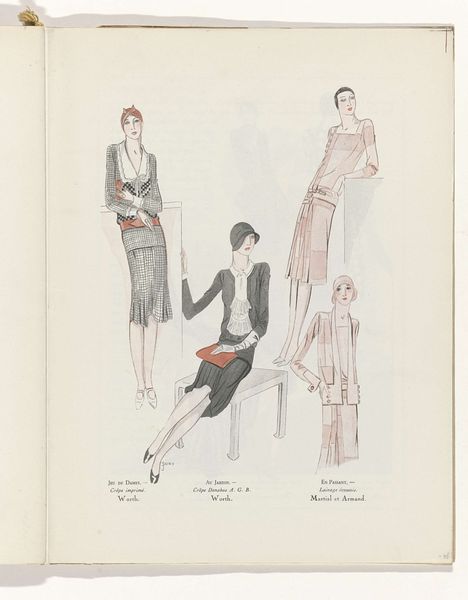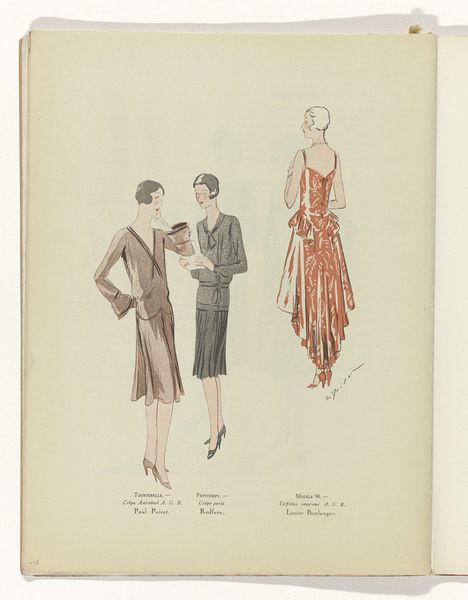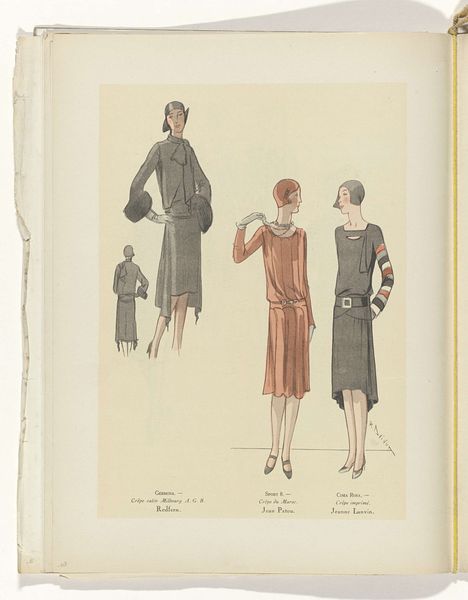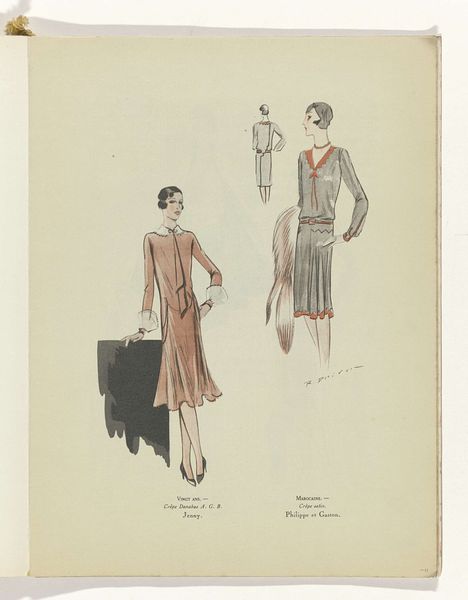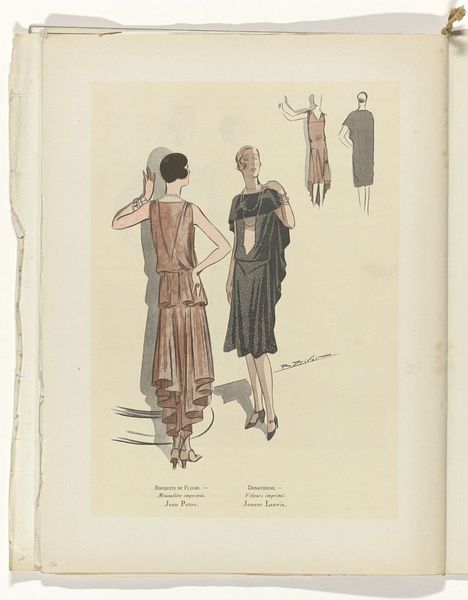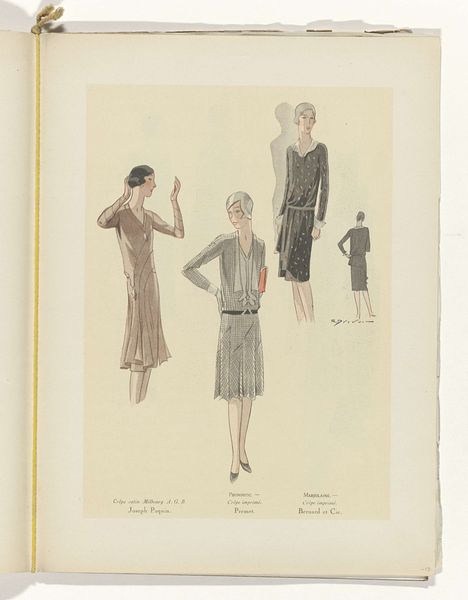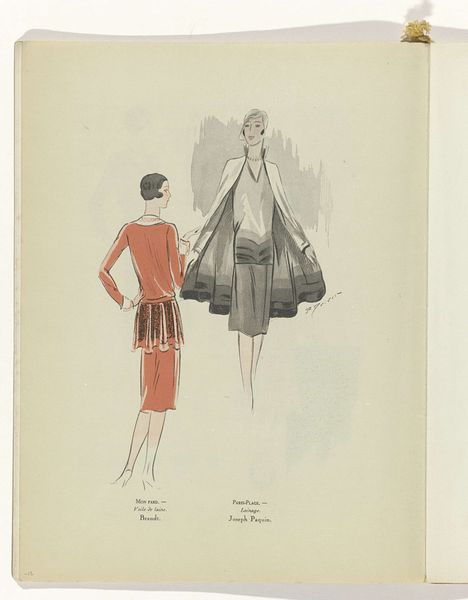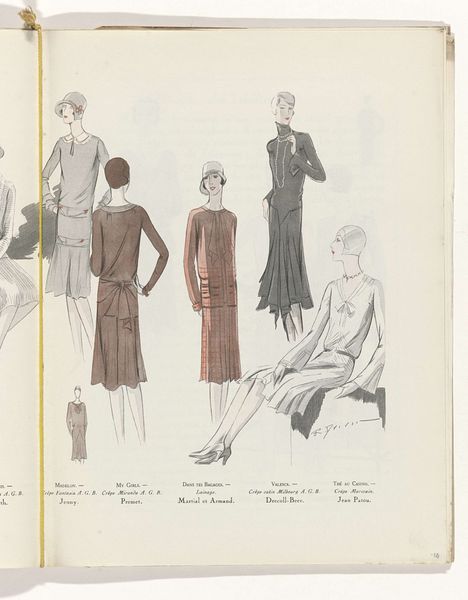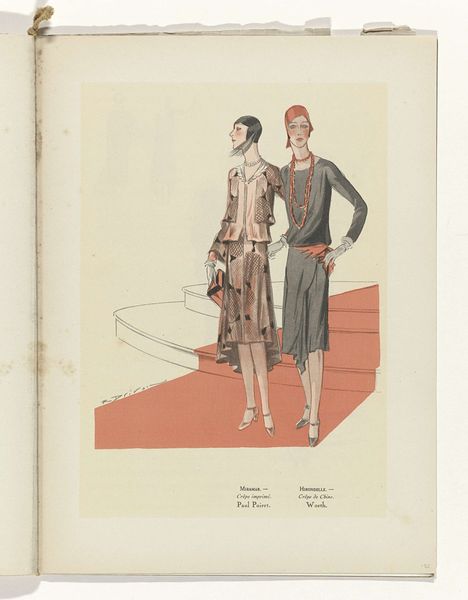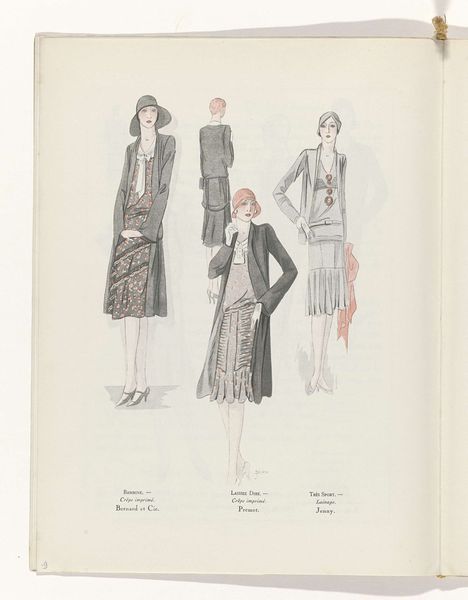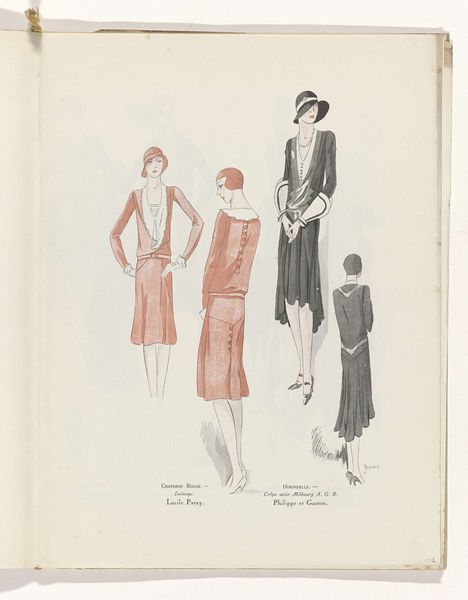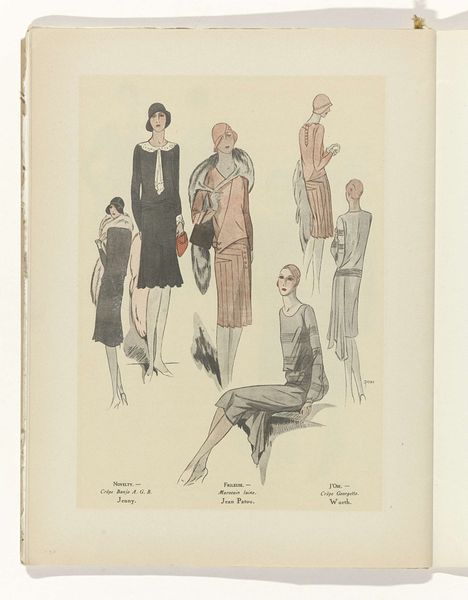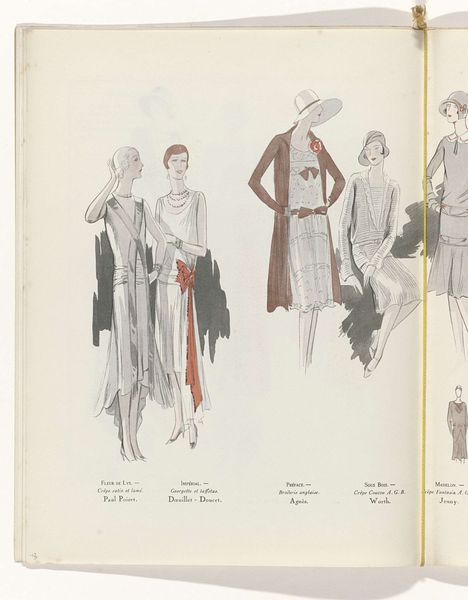
Art - Goût - Beauté, Feuillets de l' élégance féminine, Juin 1929, No. 106, 9e Année, p.15 1929
0:00
0:00
drawing, paper, ink
#
portrait
#
art-deco
#
drawing
#
figuration
#
paper
#
ink
#
watercolour illustration
#
genre-painting
#
decorative-art
#
dress
Dimensions: height 315 mm, width 240 mm
Copyright: Rijks Museum: Open Domain
Curator: Ah, another beautiful spread from a 1929 edition of "Feuillets de l'Élégance Féminine." This one's titled "Art - Goût - Beauté" by R. Drivon. The ink and watercolour drawings are so evocative of the Art Deco era. What strikes you first about it? Editor: That poised stillness! They're so… contained. Like delicate porcelain dolls observing a world slightly too vulgar for their refined sensibilities. I’m also seeing a negotiation of women's roles post-World War I—between freedom and still prescribed roles. Curator: Absolutely. There's this incredible tension between the almost severe lines of the dresses and the playful, decorative patterns. Like the “Focha” design there, the crepe printed in the Rodiers style. It whispers rebellion while maintaining decorum, don’t you think? I can almost hear Zelda Fitzgerald ordering a martini. Editor: Exactly! That tension is everything. Look at the dropped waistlines, the barely-there sleeves… They’re edging towards androgyny, questioning gender norms, all within the carefully constructed frame of "feminine elegance.” Drivon's presentation becomes a statement in itself. Curator: I love how you see that! The geometric quality and muted palette create such a striking visual language. Each detail feels incredibly considered, precise, even. Do you suppose the magazine intended these women as archetypes? Editor: In a way, yes. Fashion plates of this era performed the function of prescribing what was ‘allowed’, as much as enabling choices. To me, those attenuated figures with their stylized gazes hint at the simultaneous commodification and objectification of the modern woman. A real tension here. Curator: True. But I still see a glimmer of hope for expressing self in a society of such limited roles! Still… the image's quiet unease stays. It’s that haunting feeling of possibility tinged with societal constraint. Editor: Precisely! A stylish cage, perhaps, but a cage nonetheless. It's this duality that makes Drivon’s piece so relevant still—a poignant glimpse into the complexities of early 20th-century femininity.
Comments
No comments
Be the first to comment and join the conversation on the ultimate creative platform.
